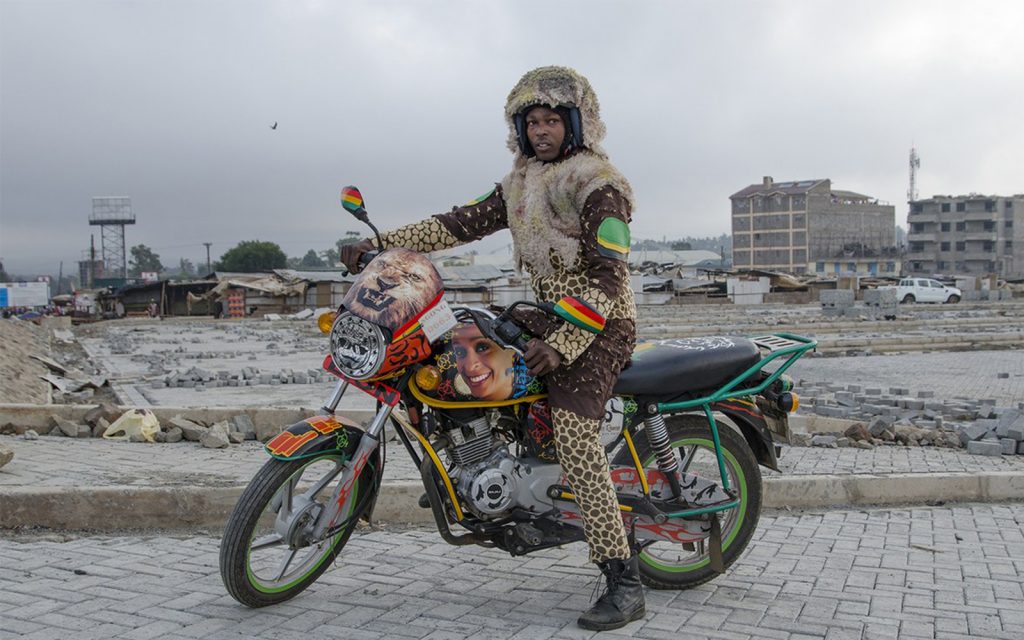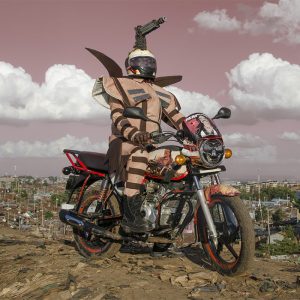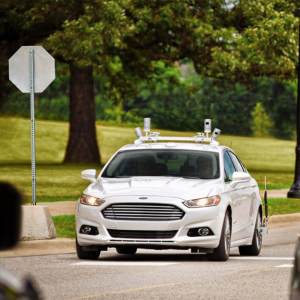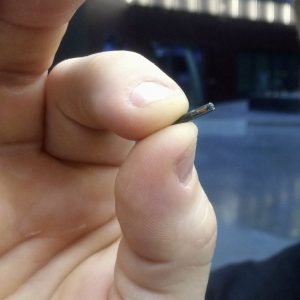Link About It: This Week’s Picks
Badass taxi drivers, helping the trans community, Leonardo da Vinci’s eye condition and more in our look around the web

Help the Transgender Community Fight Harmful Policies
 In a new memo, the Trump administration (through the Department of Health and Human Services) is attempting to “legally define gender as a biological condition determined by a person’s genitalia at birth”—an inherently transphobic act. This will strip trans, non-binary, and intersex people of many deserved rights. Of course, in times like this it’s crucial to speak, act and remain hopeful—and Teen Vogue has offered up a list of ways we can all support the transgender community. From rallying to donating money or simply reaching out to friends, the list is comprehensive and helpful. Read more at Teen Vogue.
In a new memo, the Trump administration (through the Department of Health and Human Services) is attempting to “legally define gender as a biological condition determined by a person’s genitalia at birth”—an inherently transphobic act. This will strip trans, non-binary, and intersex people of many deserved rights. Of course, in times like this it’s crucial to speak, act and remain hopeful—and Teen Vogue has offered up a list of ways we can all support the transgender community. From rallying to donating money or simply reaching out to friends, the list is comprehensive and helpful. Read more at Teen Vogue.
The Badass Costumed Taxi Drivers of Nairobi
 In Nairobi, motorbike taxis—known as “boda-bodas”—are oftentimes the best option for avoiding traffic. During a recent visit, photographer Jan Hoek noticed that noticed a well-designed, almost costumed boda-boda—it looked a lot like Nicholas Cage’s motorcycle in Ghost Rider. Inspired to create a photo series, Hoek teamed up with Ugandan fashion designer Bobbin Case, and seven drivers in the Kenyan capital got costumed to match their bike. The result is badass—and best of all, many of the riders have continued to wear elements of their costumes while driving around Nairobi. See the series at Wired.
In Nairobi, motorbike taxis—known as “boda-bodas”—are oftentimes the best option for avoiding traffic. During a recent visit, photographer Jan Hoek noticed that noticed a well-designed, almost costumed boda-boda—it looked a lot like Nicholas Cage’s motorcycle in Ghost Rider. Inspired to create a photo series, Hoek teamed up with Ugandan fashion designer Bobbin Case, and seven drivers in the Kenyan capital got costumed to match their bike. The result is badass—and best of all, many of the riders have continued to wear elements of their costumes while driving around Nairobi. See the series at Wired.
Leonardo da Vinci’s Ultra-Rare Eye Condition
 According to new research, Leonardo da Vinci’s ability to understand distance and depth is the result of an ultra-rare eye condition known as exotropia. This condition turns one pupil outward, limiting the traditional understanding of depth when looking at things—which essentially would have turned the world around da Vinci into a flat canvas. This unique perspective, the new study claims, made it easier for the artist to convert the world he saw into the artwork he created—establishing fascinating takes on structural dimension. Read more at CNN.
According to new research, Leonardo da Vinci’s ability to understand distance and depth is the result of an ultra-rare eye condition known as exotropia. This condition turns one pupil outward, limiting the traditional understanding of depth when looking at things—which essentially would have turned the world around da Vinci into a flat canvas. This unique perspective, the new study claims, made it easier for the artist to convert the world he saw into the artwork he created—establishing fascinating takes on structural dimension. Read more at CNN.
Over 400,000 Registered to Vote Through Snapchat
 Snapchat revealed to the New York Times that during a two-week period the application encouraged (and succeeded) 418,000 users register to vote. With a new button on each user’s page, the application directed them to site called TurboVote—where a survey gauged their views, determined their location and then directed them to the local outlets where they could register. “There is no more powerful form of self-expression than the ability to vote,” Jennifer Stout, Snap’s global head of public policy, says. Read more about the initiative Snap—and other platforms—are running at the New York Times.
Snapchat revealed to the New York Times that during a two-week period the application encouraged (and succeeded) 418,000 users register to vote. With a new button on each user’s page, the application directed them to site called TurboVote—where a survey gauged their views, determined their location and then directed them to the local outlets where they could register. “There is no more powerful form of self-expression than the ability to vote,” Jennifer Stout, Snap’s global head of public policy, says. Read more about the initiative Snap—and other platforms—are running at the New York Times.
Ford’s Driverless Car Fleet to Launch in Washington DC
 Starting next year, Ford will test a fleet of self-driving cars throughout Washington DC. This comes before launching a full, commercial autonomous driving program in the city (and others) come 2021. Many developers of similar programs are vying for cities of their own—Uber in Pittsburgh and Google’s Waymo in Phoenix. Regulation over self-driving vehicles is quite loose right now, and it will be interesting to chart developments in the nation’s capital. Read more at the Washington Post.
Starting next year, Ford will test a fleet of self-driving cars throughout Washington DC. This comes before launching a full, commercial autonomous driving program in the city (and others) come 2021. Many developers of similar programs are vying for cities of their own—Uber in Pittsburgh and Google’s Waymo in Phoenix. Regulation over self-driving vehicles is quite loose right now, and it will be interesting to chart developments in the nation’s capital. Read more at the Washington Post.
Thousands of Swedes Opt for Microchips Under Their Skin
 For $180 it’s possible to get a microchip, roughly the size of a grain of rice, inserted between one’s thumb and forefinger. In fact, about 4,000 Swedes have done this so far, with a company like Biohax International or its competitors. Designed to “speed up users’ daily routines and make their lives more convenient—accessing their homes, offices and gyms is as easy as swiping their hands against digital readers,” the microchip contains identification information, emergency contact details and more. It could even connect to social media profiles or e-tickets. But for all the hyper-connectivity it offers, concerns center around hacking. Read more about the process, developments and fears at NPR.
For $180 it’s possible to get a microchip, roughly the size of a grain of rice, inserted between one’s thumb and forefinger. In fact, about 4,000 Swedes have done this so far, with a company like Biohax International or its competitors. Designed to “speed up users’ daily routines and make their lives more convenient—accessing their homes, offices and gyms is as easy as swiping their hands against digital readers,” the microchip contains identification information, emergency contact details and more. It could even connect to social media profiles or e-tickets. But for all the hyper-connectivity it offers, concerns center around hacking. Read more about the process, developments and fears at NPR.
The McLaren Speedtail

McLaren unveiled the Speedtail today, their first-ever “Hyper-GT.” It’s the fastest, most aerodynamic and most powerful McLaren ever, and all 106 of the $2,250,000 cars are already spoken for. Its three-seat formation (with the driver in the center) isn’t street-legal in the US because its design eliminates the space where side airbags are installed, and it boasts retractable cameras where side-view mirrors usually are. Read more about the rules one would have to follow in order to own one at Road and Track.
Link About It is our filtered look at the web, shared daily in Link and on social media, and rounded up every Saturday morning.









